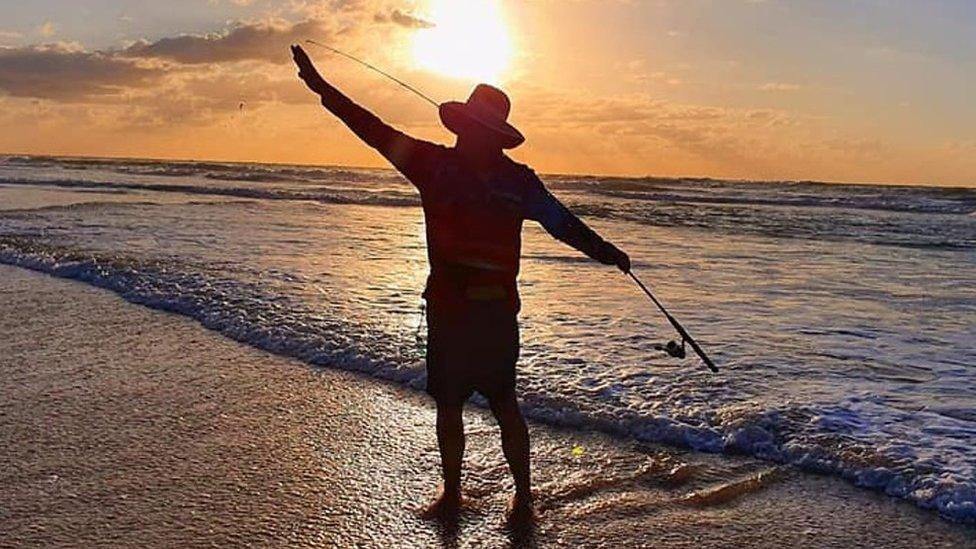What's gone wrong with Australia's vaccine rollout?
- Published
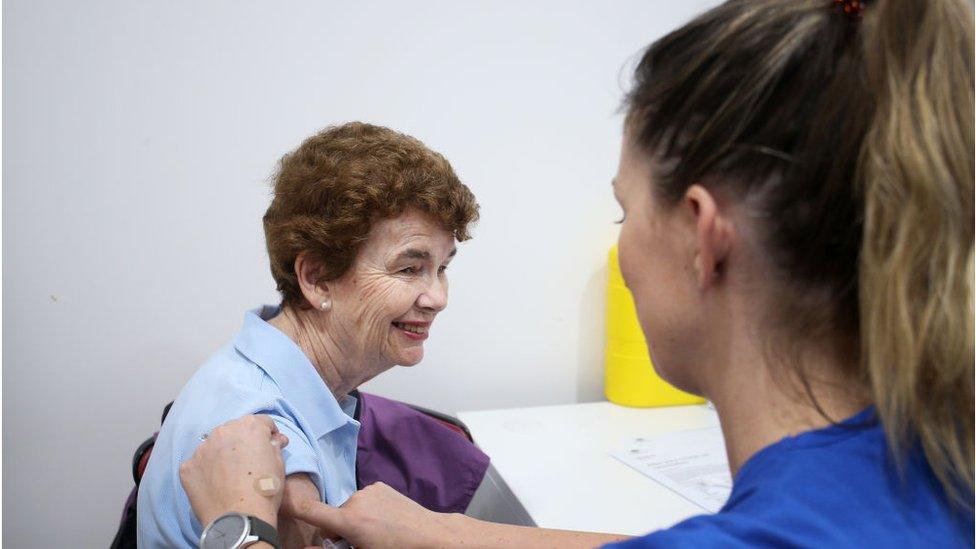
Australia has been slower than most others to immunise its population
Australia has been one of the world's success stories in its fight against Covid-19, but frustration surrounds its delayed vaccination rollout.
The country has been slower than most others to immunise its population, with some high-risk groups crying out for protection.
While progress has recently accelerated, roughly 3% of the population has been fully vaccinated.
Supply shortages and mismanagement have been blamed for the delays.
Now, the government faces fresh supply pressure after it raised the recommended age for the AstraZeneca jab to people over 60. Right now, AstraZeneca is the main component of the country's immunisation programme.
Vaccine hesitancy in some pockets of the community has also risen even as the pace of the rollout has picked up in recent weeks and reached daily records.
Steps have been taken to speed up the rollout, such as mass immunisation hubs. Yet the government is seeing its success so far in battling Covid tarnished by its sluggish vaccination effort.
How many Australians have been vaccinated?
The rollout began in February and so far 6.1 million vaccine doses have been administered nationwide. Around 3% of the population has been fully vaccinated, according to data from John Hopkins University., external
After initially saying all Australians would be fully vaccinated by October, the government kept pushing its timeline. Now, it's scrapped its target altogether.
Prime Minister Scott Morrison said given the "many uncertainties involved" it was no longer possible to set an end-of-year vaccination goal. It has said all adults will be able to receive at least one dose by end 2021.
The government has ramped up efforts to immunise more people by improving access to vaccines and lowering the age requirements for eligibility.
Doses are currently being offered to people over 40. Other eligible groups include frontline health workers, emergency services workers, Aboriginal and Torres Strait Islander people over 16, and people with underlying health conditions.
Still, the government has faced sharp criticism for its slow progress in vaccinating high-risk groups in the aged care and disability sector.
In June, a senate committee was told that fewer than 2% of people living in disability residential accommodation had been fully vaccinated.
At that time, the government also failed to provide clear numbers on how many aged care workers had been vaccinated.
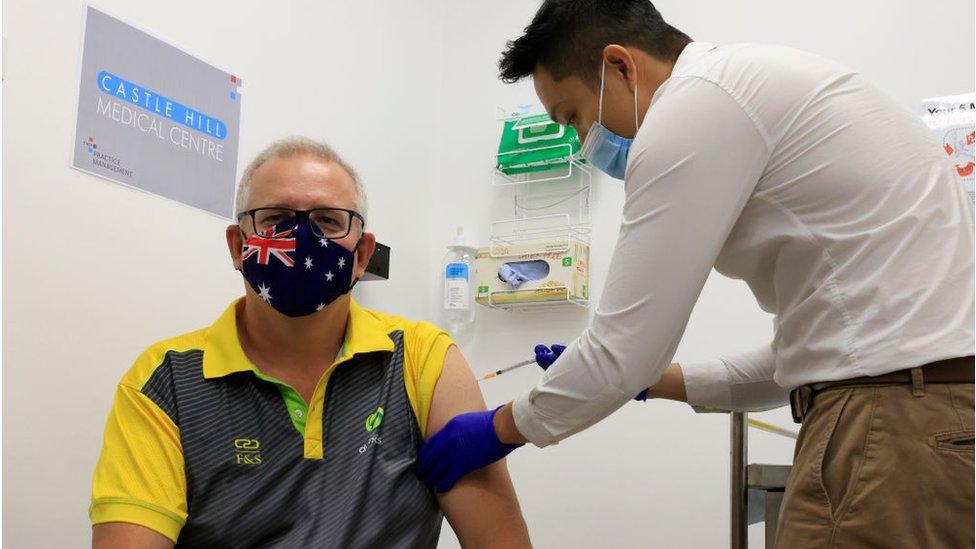
Prime Minister Scott Morrison says it is no longer possible to set an end-of-year vaccination goal
How does Australia compare globally?
A strict policy of lockdowns, border closures and quarantine controls has seen Australia keep infection levels low. The country has recorded 910 deaths and 30,274 cases since the pandemic began - far fewer than most other nations.
On the vaccination front, however, it remains a laggard. According to the latest Our World data, Australia has delivered 23 doses per 100 people.
That rate compares to 106.1 doses per 100 people in the UK, 92.9 in the US, and 73.3 in Germany. Most vaccines require two doses.
Australia is one of the worst performers in the Organisation for Economic Co-operation and Development (OECD), though Japan and New Zealand hold lower vaccination rates per 100 people.
Why have there been delays?
A big part of the problem has been access to supplies. Australia's programme is most reliant on the AstraZeneca shot, followed by Pfizer. It also has supply deals for Moderna and Novavax, if those vaccines are approved by regulators.
The country's initial efforts in securing vaccines appeared promising. It was among the first to announce an order with AstraZeneca, and also trumpeted its local manufacturing capacity with medical firm CSL.
Early in the rollout, though, confusion over just how much stock Australia had began to circle. A tussle with the European Union led to part of the AstraZeneca order being held back. And a lack of clear, public information has made it difficult to assess supply levels.
At the same time, domestic production hasn't lived up to expectations. Manufacturing began in March, with the government failing early on to hit its target of about one million doses a week.
Then, issues around a rare blood clotting disorder associated with the AstraZeneca jab, made the situation worse. Two people have died after developing the disorder.
The government now recommends people under 60 get a Pfizer vaccine. The advice, issued on 17 June, is expected to put strain on Pfizer stockpiles. The government has said Australia will receive 40 million doses of the Pfizer jab this year, but it's unclear how many doses are available right now.
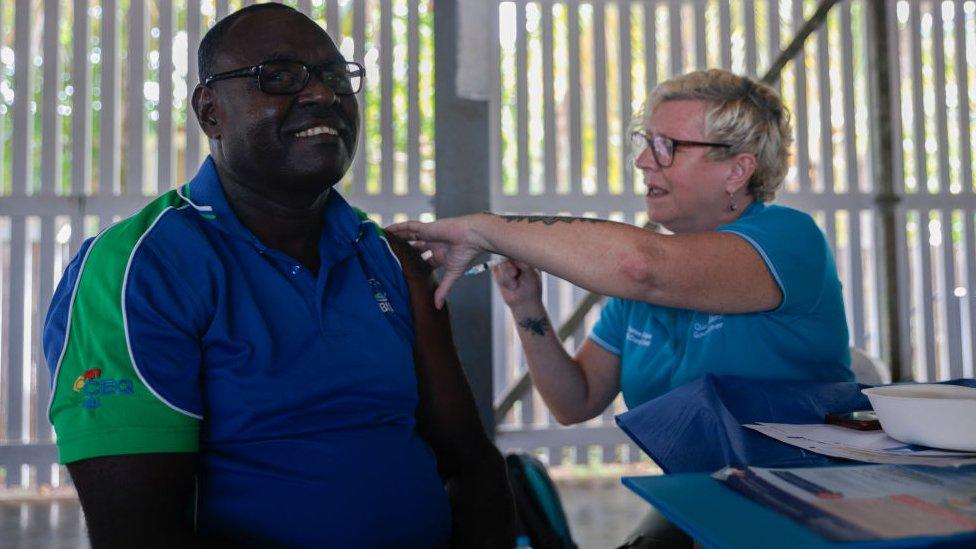
Australia had been largely relying on AstraZeneca's vaccine
Are there any other issues?
Concerns about the AstraZeneca vaccine slowed things down and also contributed to some vaccine hesitancy.
Last month, a survey found about one-third of Australians said they were unlikely to get vaccinated. The caution mostly centred around side effects and a lack of urgency given Australia's low infection rates.
At the same time, some young Australians remain enthusiastic - but unable - to get access to a vaccine.
Supplies have also been an issue.
Doctors administering vaccines at clinics have spoken out about shortages, while the nation's general practitioners' (GP) union had also raised concerns.
At the same time, state and federal government have argued over who is to blame for the delays.
Two state governments - New South Wales and Queensland - have accused the federal government of failing to provide certainty over how many vaccines would be delivered. This, in turn, has slowed down scheduling appointments. There are reports of patients across Australia having difficulties booking slots.
What is being done to speed up the rollout?
The government says things are picking up.
It has hit daily vaccination records in various states. Mass vaccination centres have been opened to speed up delivery.
More local production is also possible. The state of Victoria will inject A$50m toward a production facility to make mRNA vaccines - like the Pfizer jab - locally.
Still, any facility would require much more funding and it would take at least a year before any doses could realistically be manufactured.
What are the wider implications of the delays?
Beyond the health concerns, the delay risks economic and social damage.
While Australia has fought the battle against Covid in part due to hard border policies, vaccines have been held up as key to unlocking the gates once more.
Sectors like tourism and aviation are relying on high levels of immunisation to revive business. Failure to get there risks jeopardising the newly opened Australia-New Zealand travel bubble, along with other potential travel hubs with countries such as Singapore.
Australians stranded abroad, already struggling to make it home, may find it even more difficult to do so.
Related topics
- Published20 May 2021
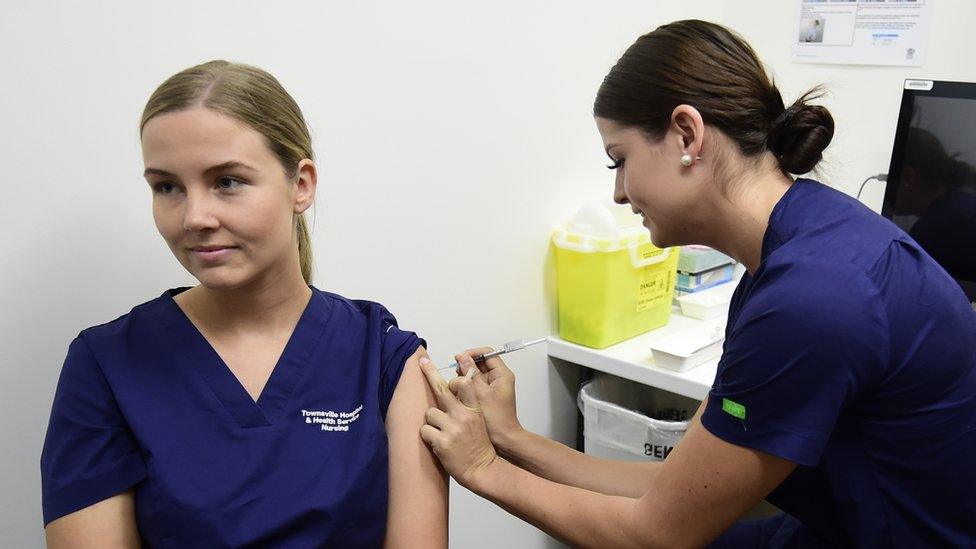
- Published2 June 2021
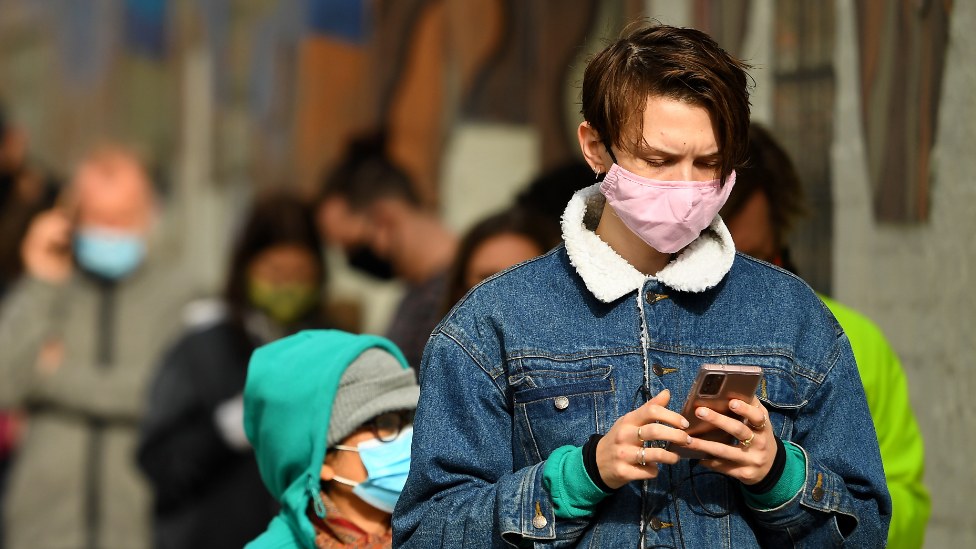
- Published29 April 2020
